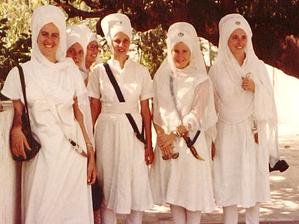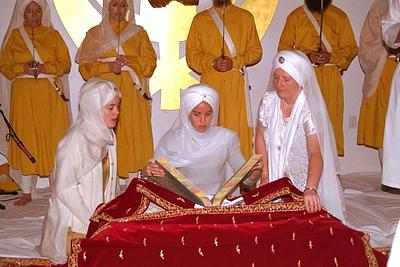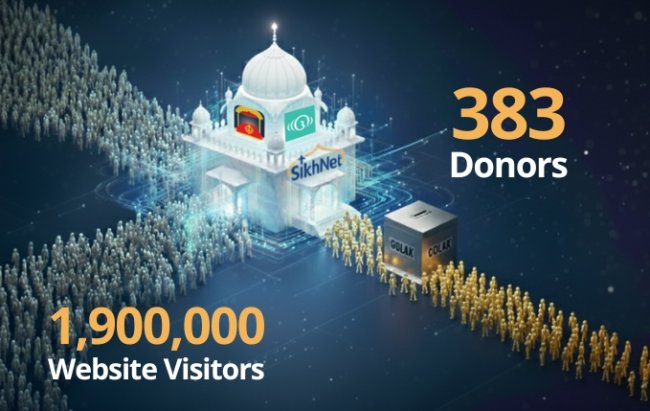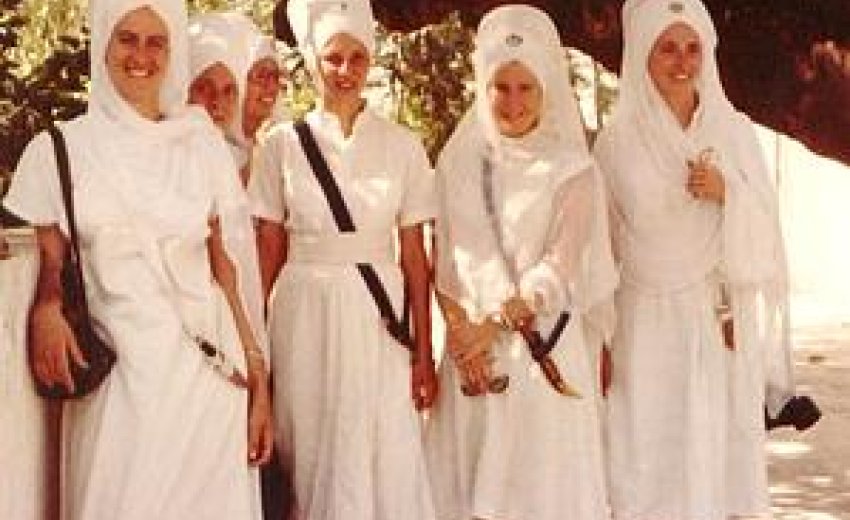The Sikh Gurus never saw any difference between people based on gender and went as far as addressing everyone as female and Waheguru Ji as male. Then why is gender equality such a big deal today? Shouldn’t we have gender equality without any questions asked? We should, but we don’t, and to understand why we don’t, we have to examine the women of yesteryear, today and tomorrow.
The women of yesteryear were some of the bravest, most independent women the Khalsa Panth has ever seen. We had Mata Khivi Ji, who was known for starting Guru ka Langar in a time period where women had a hard time even leaving the house, let alone take independent decisions. There was Bibi Amro Ji, who was independent enough to inspire the third Sikh Guru to seek out Sikhi, to become a preacher and reach out to more Sikhs. Mai Bhago best exemplifies traits of bravery and independence as she was the one to lead the forty martyrs back to Guru Gobind Singh Ji. Bibi Dalair Kaur and her group of 100 brave women were part of the group that decided to stay back and protect the fort, which they did with their lives. These women taught all Sikh women how to live life with their head held up high. It was only due to their wonderful example that Sikh women survived the trying time that followed Guru Gobind Singh Ji leaving for Sachkand.
The time after Guru Gobind Singh Ji left his physical body was a tough one for all Sikhs, as the Islamic rulers put a price on their heads. Many Sikhs went into hiding into the jungles, only coming out for guerrilla attacks on the oppressors and visits to Gurudwara Sahibs on special Sikhi related occasions. But not all Sikhs went into hiding; there were a group of Sikhs that were just coming into Sikhi that would follow Sikhi but who would not don the appearance of Sikhs. This group of people were called the sehejdhari Sikhs, meaning they are slowly coming into Sikhi from a non-Sikh background. This group of Sikhs did quite a bit to help their Sikh brothers by providing news, food, shelter and etc. The problem with that was there was suddenly a group of people that were neither fully Sikhs nor fully Hindus/Muslims. This allowed for Sikh practices and traditions to be diluted by other cultures and religions. Suddenly the women began to be treated differently, just as they were by Indian culture and by other religions. The excuse given was safety for women and the children during the tough times. Though there were brave Sikh women even during this time period who gave their lives rather than bring dishonor to Sikhi, as time passed more and more people who put their Sikhi on the back burner in order to save their lives. But we can’t really judge the Sikhs of that time period because we ourselves put much smaller things before Sikhi. The point is that with Sikhi being diluted by people wanting to escape the tough times unharmed, the women were not treated as equals and were expected to just stay home and leave it to the men to protect Sikhi. Soon the practices adopted to get through the hard times became the tradition and the gender inequality only grew.
The excuse given was safety for women and the children during the tough times. Though there were brave Sikh women even during this time period who gave their lives rather than bring dishonor to Sikhi, as time passed more and more people who put their Sikhi on the back burner in order to save their lives. But we can’t really judge the Sikhs of that time period because we ourselves put much smaller things before Sikhi. The point is that with Sikhi being diluted by people wanting to escape the tough times unharmed, the women were not treated as equals and were expected to just stay home and leave it to the men to protect Sikhi. Soon the practices adopted to get through the hard times became the tradition and the gender inequality only grew.
It grew to the point where even today many Sikhs partake in abortion of unborn female children and in ill-treating their own daughters. But now, some women are fighting back and demanding their equal rights back and when they aren’t getting them, they are lashing out. There are many reports of women marrying outside of Sikhism and converting, having affairs before marriage and many more deeds which are strictly against Sikhi. These women are going through an identity crisis because although they follow a religion that calls for gender equality they live in a world where they are still treated differently. Sadly, instead of the Sikh leaders understanding their frustration and the reasons why they are lashing out, they are condemning them for their actions. This just drives our women further from Sikhi and creates resentment. That is why all Sikhs must reach out to the women that of Khalsa Panth and create a brighter future for the Sikhs of tomorrow. Blessings of Waheguru Ji and seva are the only way to create a brighter future for the next generation. We must do Ardass for Waheguru Ji to bless us and help us and begin to reach out to our sisters. Then we must encourage our sisters who are well versed in Sikh practices and etiquette to do more seva in public view. That means anything from Kirtan to starting outreach projects to being allowed to do ardass and take Hukamnama from Guru Granth Sahib Ji for the sangat. We need to reaffirm the fact that not only do we preach equality but we live it as well. My personal request to all my sisters is to come forward and inspire more sisters to find and love Sikhi by setting a great example. And my request to all my brothers is to support their sisters and encourage them in this great effort.
Blessings of Waheguru Ji and seva are the only way to create a brighter future for the next generation. We must do Ardass for Waheguru Ji to bless us and help us and begin to reach out to our sisters. Then we must encourage our sisters who are well versed in Sikh practices and etiquette to do more seva in public view. That means anything from Kirtan to starting outreach projects to being allowed to do ardass and take Hukamnama from Guru Granth Sahib Ji for the sangat. We need to reaffirm the fact that not only do we preach equality but we live it as well. My personal request to all my sisters is to come forward and inspire more sisters to find and love Sikhi by setting a great example. And my request to all my brothers is to support their sisters and encourage them in this great effort.
With all Sikhs working together to create a better tomorrow, filled with equality of all, we cannot fail. Taking inspiration from the great women of yesteryear, we will inspire the women of today to create a brighter future for tomorrow. Let us create a world where we can inspire more women to follow the footsteps of the women from the past and become forever an inspiration for generations to come. Sikhs originally believed in gender equality and now it is time to regain the loss of that and pass that spirit of nobility, grace and strength on to our children.

